
Plenty of vintage car enthusiasts must wonder what the oldest cars in the world are. The earliest automobiles were mostly powered by steam, were quite bulky, and hence quite slow. At least when you compare them to the current ones. They could also only seat a bare minimum number of passengers and required plenty of fuel. Still, there is something charming about these strange old vehicles.
While the design of the earliest automobiles won’t work today, they were certainly unique and fascinating, especially to people obsessed with snazzy-looking cars. Here, we dive into the history of the oldest vehicles in the world and understand what made them special in their time.
1. Cugnot Fardier
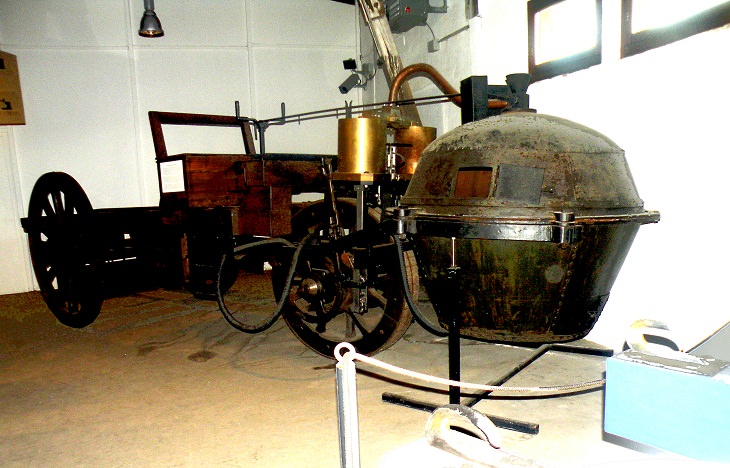
Image Source: Wikimedia Commons
Nicolas-Joseph Cugnot was a French military engineer who is credited with having designed and built the first working self-propelled mechanical vehicle - a massive and bulky steam-powered tricycle. Cugnot had been experimenting with working models of steam-engine-powered vehicles for the French Army and built the first prototype for the self-propelled mechanical vehicle in 1769.
The vehicle was initially designed to haul artillery to the battlefield and could move at a speed of only three miles per hour in order to allow soldiers to keep up with it. Interestingly, this hulking vehicle could pull a load of close to five tons and had the ability to run for an hour and fifteen minutes at one go. A maximum of four passengers could sit aboard this automobile for about fifteen minutes.
The legend goes that when the Cugnot Fardier moved through the streets, it belched and snorted so loudly it scared passersby.
2. London Steam Carriage
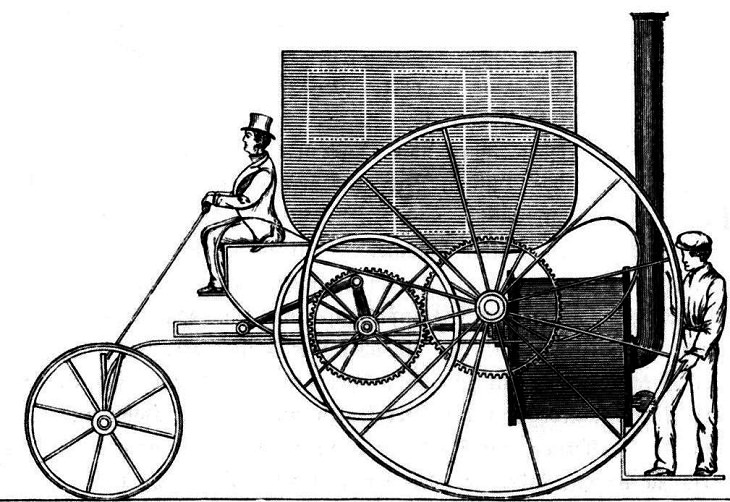
Image Source: Wikimedia Commons
The London Steam Carriage is believed to be the first self-propelled passenger-carrying vehicle. Richard Trevithick, a British mechanical engineer and inventor of this vehicle built his first steam carriage in 1801 and drove it up a hill in Camborne, Cornwall. It was nicknamed the “Puffing Devil”. The very next year, Trevithick took out the patent for his invention.
In 1803, he built a second carriage, and this time, he drove it through the streets of London at a speed of 4-9 miles per hour (6.4 -14.5 km/h). The first passenger-carrying vehicle was definitely enormous but could have gone on to have an impact in those times had it been allowed to run for a while. Unfortunately, the ‘puffing devil’ was destroyed in a fire almost immediately. The original drawings by Trevithick have survived, however, and thus his patent remains intact.
3. Hancock Omnibus
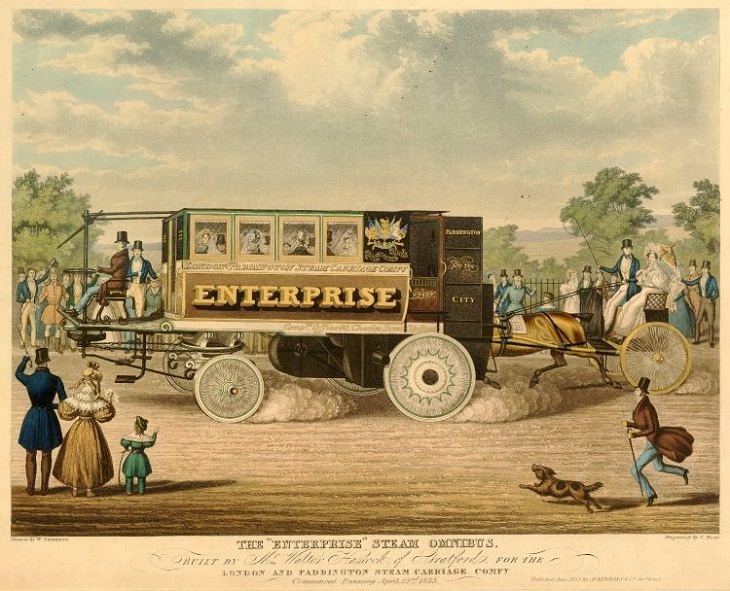
Image Source: Wikimedia Commons
Regarded as the first commercially successful steam-powered car in the world, the Hancock Omnibus, also called the Enterprise Steam Omnibus, was built by English inventor Walter Hancock sometime around 1832. From 1824-1836, Hancock painstakingly built 10 steam carriages which ran at speeds of close to 25 mph. In 1831, he introduced an experimental steam carriage, a passenger bus, which was made for the London and Paddington Steam Carriage Company.
Two years later, the bus commenced regular service between London Wall and Paddington via Islington. This made it the world’s first steam carriage service. To operate the Enterprise, three people were needed - the driver and two operators. However, Hancock wasn't one to be easily satisfied.
In 1836, he ran a regular bus service with four steam carriages out of the City of London and went on to cover 4,200 miles in 20 weeks with them while carrying almost 13,000 passengers. The vehicle was received well by the public and the Enterprise Steam Omnibus became popular in the coming years.
4. Grenville Steam Carriage
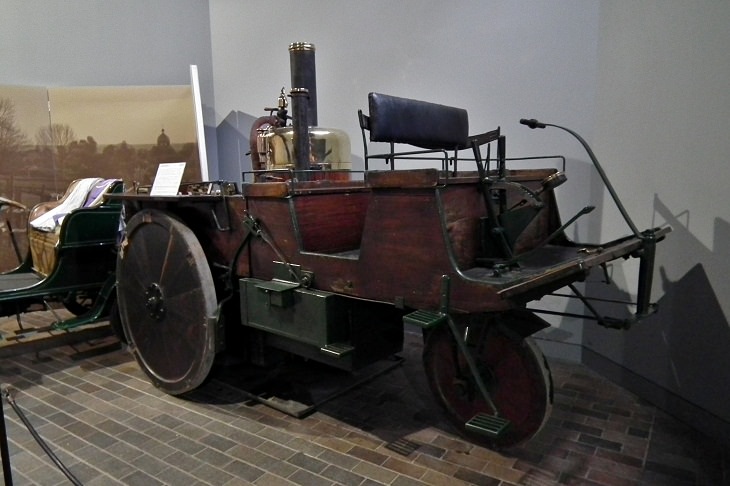
Image Source: Wikimedia Commons
The Grenville Steam Carriage was built by engineer Robert Neville Grenville of Somerset, United Kingdom. One of the most amazing things about the automobile is that it is believed to be the oldest, self-propelled passenger-carrying road vehicle that is still operational.
The Grenville steam carriage was designed in about 1875 and was built over a period of fifteen years. Originally, the engine had a single-cylinder type mounted on the boiler. However, it was later replaced with a twin-cylinder engine. The vehicle can accommodate four passengers along with the driver and the steersman. There’s another extra seat in the engine compartment for the fireman and the carriage can run at a speed of under 20 mph (32 km/h).
After Grenville’s death in 1936, the vehicle was lent to John Allen & Sons Ltd. of Oxford and went through a complete overhaul.
5. La Marquise
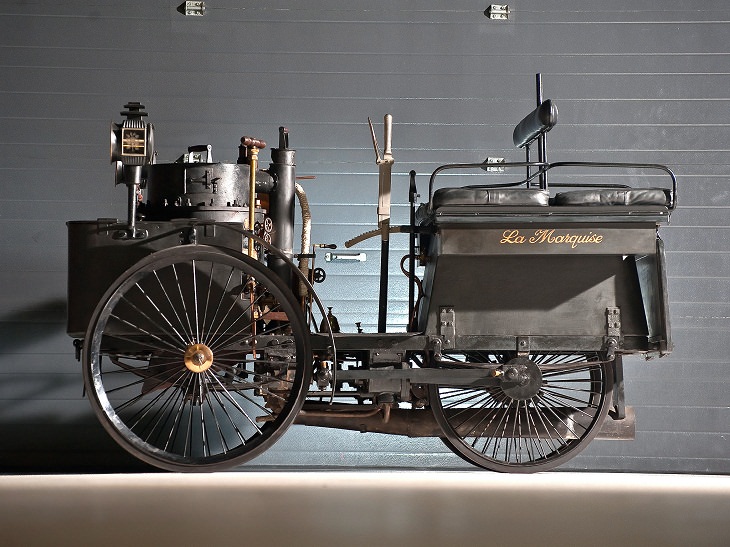
Image Source: Wikimedia Commons
Built in the year 1884 by a Frenchman named De Dion-Bouton et Trepardoux, La Marquise went on to become the oldest known running automobile. The car could attain a top speed of 38 mph (61 km/h), and since its invention has only been owned by four people. The four-wheeled vehicle was originally built for the French Count De Dion and was fueled by coal, wood, and bits of paper.
One drawback of the car was that it took close to half an hour to build up enough steam to start running. Despite that, the car was quite popular in its time. In fact, the La Marquise was driven in an exhibition in 1887 by Count De Dion and was even dubbed as the world’s first car race back then.
In 2011, a La Marquise model was sold at an auction for $4.6 million.
6. Benz Patent-Motorwagen
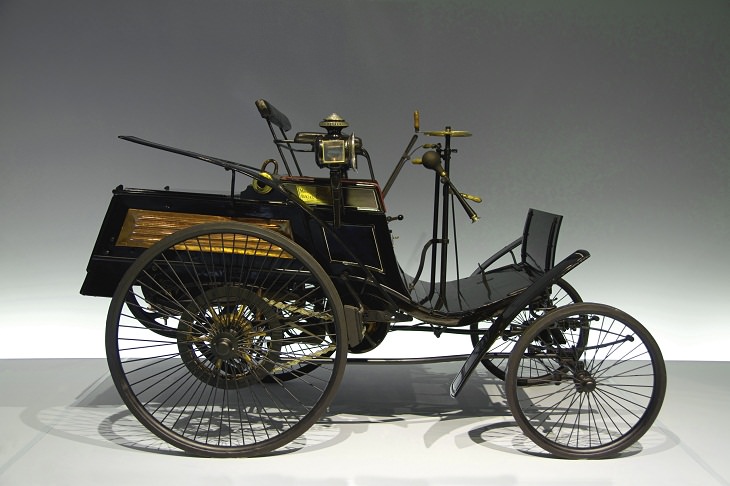
Image Source: Wikimedia Commons
The Benz Patent-Motorwagen is often regarded as the world’s first official automobile despite the fact that several vehicles predate it. So how did it get that label? Well, the Benz Patent-Motorwagen was the first vehicle developed to be propelled by an internal combustion engine. Designed by Carl Benz, it was a one-cylinder four-stroke unit and made its maiden run on New Year’s Eve in 1879. This lightweight car is rightly called the first stationary gasoline engine.
Some of the highlights of this two-seater vehicle were its high-speed single-cylinder, the four-stroke engine, as well as the three wire-spoked wheels. The engine output was 0.75 hp (0.55 kW) which was quite impressive for its times. Furthermore, its tube-shaped steel structure gave it quite a sleek appearance.
The car was completed in 1885 and Benz got the patent for it only late next year. In 1886, he finally unveiled his car to the public in Mannheim, Germany.
7. Daimler-Maybach Stahlradwagen
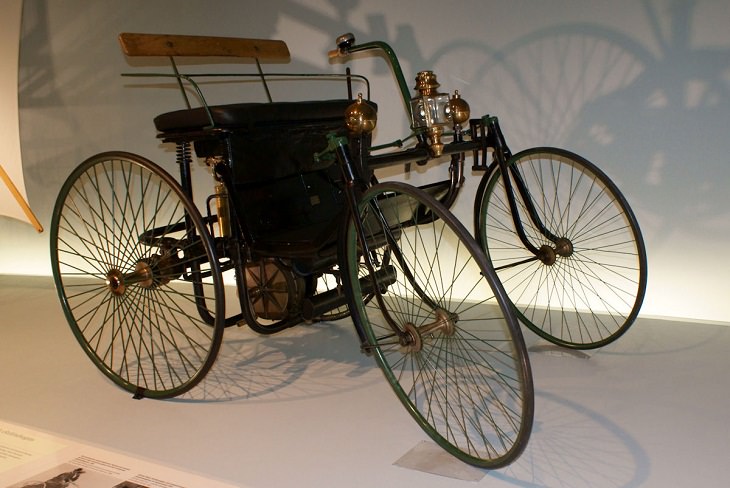
Image Source: Wikimedia Commons
The Stahlradwagen was a steel-wheeled car developed by two German engineers and inventors, Gottlieb Daimler and Wilhelm Maybach. The duo was popular because they had first attempted the technology of internal combustion engines. The two were lifelong friends and worked together until Daimler’s death.
The standout feature of this car was that it was powered by a single-cylinder engine that was located under the driver's seat. Interestingly, Daimler and Maybach couldn’t produce their new automobile in Germany. However, they got the license to build it in France. The car was launched at the Stahlradwagen at the Paris Exhibition in October 1889 and was met with a great reception. Daimler and Maybach went on to establish the Daimler Motoren Gesellschaft (DMG) company in 1890 where they wanted to sell their engines. In 1892, they finally sold their first car.